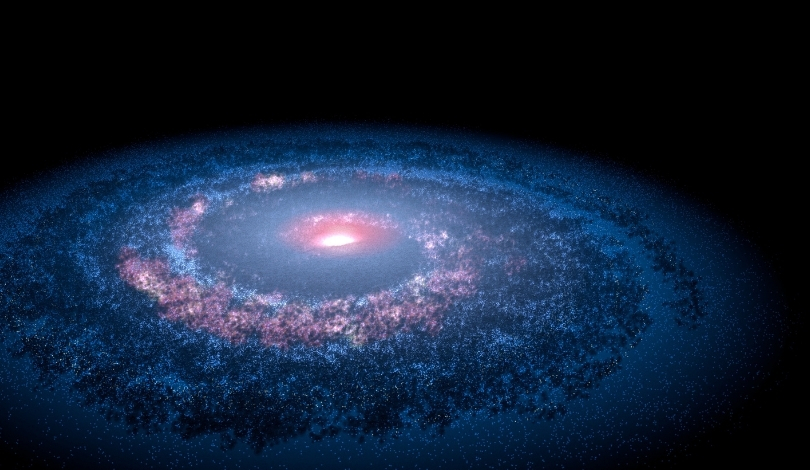The James Webb Space Telescope has unveiled new details about GJ 9827 d, an exoplanet located approximately 100 light years from Earth. This discovery marks the first observational confirmation of a planet with an atmosphere nearly entirely composed of water vapor. The findings provide valuable insights into the diversity of planetary atmospheres beyond our Solar System.
Recent studies have primarily identified exoplanet atmospheres rich in hydrogen and helium, similar to those of gas giants in our own Solar System. The identification of a water-dominated atmosphere on GJ 9827 d represents a significant departure from these earlier findings, highlighting the broader range of atmospheric compositions that exist among exoplanets.
How Did Scientists Detect the Water Vapor?
Researchers employed transmission spectroscopy to analyze the planet’s atmosphere. As GJ 9827 d transits its K-type star, light passes through the atmosphere, allowing scientists to identify specific wavelengths absorbed by water vapor. This technique enabled the detection of over 31% water vapor by volume in the planet’s atmosphere.
What Are the Unique Features of GJ 9827 d?
GJ 9827 d is classified as a sub-Neptune, being roughly twice the size of Earth and three times its mass. Unlike most known exoplanets, its atmosphere lacks significant hydrogen or helium, instead featuring high metal enrichment and substantial water vapor. These characteristics differentiate it from other sub-Neptunes and broaden our understanding of planetary diversity.
Why Is High Metallicity Important?
The high metallicity of GJ 9827 d’s atmosphere offers critical insights into planet formation and atmospheric retention. It challenges previous assumptions that sub-Neptunes predominantly host light-element atmospheres. By breaking the clouds-metallicity degeneracy, scientists can better interpret atmospheric data, paving the way for more accurate models of exoplanetary atmospheres.
This breakthrough not only enhances our comprehension of GJ 9827 d but also aids in the study of other exoplanets with similar compositions. The ability to distinguish between high metallicity and cloud-covered atmospheres will improve the identification of potentially habitable worlds. As JWST continues to explore distant planets, these advancements will be instrumental in the ongoing search for life beyond Earth.
GJ 9827 d’s discovery underscores the importance of advanced telescopic technology in expanding our knowledge of the universe. By revealing the complexities of exoplanet atmospheres, scientists are better equipped to explore the myriad possibilities of planetary environments. This progress marks a significant step forward in the field of astronomy and the quest to understand the vast diversity of worlds that exist beyond our own.










